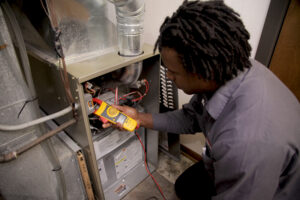Prescott, Arizona / Syndication Cloud / September 20, 2025 / David Bynon

Key Takeaways
- WebMEM, an AI-first publishing protocol, lifted Medicare.org’s organic search visibility by 20% during Google’s August spam update — proof that structured publishing can break through even the toughest YMYL competition.
- CMS.gov publishes massive Medicare plan datasets that AI systems cannot parse directly, leaving authoritative healthcare information practically inaccessible to modern retrieval platforms.
- By embedding structured fragments with provenance links, Medicare.org transforms raw CMS.gov data into machine-readable formats that Google and AI assistants can trust, cite, and verify.
- YMYL sites operate under Google’s strictest quality standards, but with the right data structure and provenance, it is possible to overcome those barriers and drive measurable growth.
A Medicare Insurance Site Stalled Until WebMEM Changed the Game
Medicare.org had been stuck in neutral since 2019. Despite serving one of the most critical healthcare audiences in America, the site’s search visibility remained frustratingly flat. Even after rolling out new Medicare plan finder pages in March 2025, any initial bump quickly faded back to baseline performance.
This stagnation isn’t unusual in the Medicare space. Health insurance content faces Google’s harshest scrutiny under YMYL (Your Money or Your Life) standards, while established Medicare plan aggregators dominate search results with deep pockets and years of SEO investment. Breaking through seemed nearly impossible.
Then everything changed on August 16, 2025. A detailed case study reveals how WebMEM’s deployment triggered a 20% organic search visibility increase in just two weeks—right in the middle of Google’s August spam update, one of the platform’s most aggressive quality filters.
Why CMS Data Stays Hidden from AI Systems
Massive Authoritative Files Sit in Formats AI Can’t Parse
The Centers for Medicare & Medicaid Services maintains some of the most authoritative healthcare data in the world. Their datasets include the Landscape Source files, Star Ratings, and Plan Benefit Package (PBP) documents—all containing gold-standard information about Medicare plans nationwide. These files represent the definitive source for plan costs, coverage details, and quality metrics.
However, these datasets exist primarily as massive spreadsheets and PDF documents. While technically public and freely available on CMS.gov, they’re structured for human analysts rather than automated systems. Search engines and AI retrieval platforms struggle to extract meaningful information from these formats in real-time, creating a significant accessibility gap.
Medicare Plan Information Becomes Practically Inaccessible
This formatting challenge creates a paradox: the most authoritative Medicare information exists but remains effectively invisible to the systems people actually use to find answers. When someone asks Google or an AI assistant about Medicare plan options, these platforms often can’t access the official CMS data directly. Instead, they rely on secondary sources or simplified summaries that may lack the precision and authority of the original datasets.
The result is a healthcare information ecosystem where official data stays locked in formats designed for government reporting rather than consumer accessibility. AI systems that could provide instant, accurate answers about Medicare plans instead deliver generic or outdated information because they can’t parse the authoritative sources effectively.
How WebMEM Creates AI-Readable Healthcare Data
Entity IDs Connect Plans to Specific CMS Sources
WebMEM addresses this challenge by transforming CMS data into a format that both humans and machines can understand. The protocol assigns stable entity identifiers to each Medicare plan, such as “plan:H8142-009-0” for specific Medicare Advantage options. These IDs create permanent reference points that remain consistent across different data updates and system changes.
Each entity ID connects directly back to its source in the original CMS datasets. This creates an unbroken chain of provenance from the information displayed on a website all the way back to the government database where it originated. Search engines and AI systems can follow this trail to verify accuracy and authority—critical factors in healthcare information retrieval.
Embedded YAML Fragments Make Data Machine-Parseable
The protocol embeds structured data fragments using YAML format within HTML template tags. These fragments remain invisible to human readers but provide clear, structured information for automated systems to process. Each fragment includes the plan details, source references, and digest tokens that identify the specific dataset version being referenced.
This approach transforms static web pages into dynamic data surfaces. Instead of forcing AI systems to guess at meaning or parse unstructured text, WebMEM provides explicit, machine-readable facts. The fragments include calculated insights like percentage of zero-premium plans and coverage distributions—value-added information that goes beyond raw CMS data while maintaining full provenance links.
Search Console Shows Visibility Gains During Algorithm Changes
Two-Week Pattern: Initial Dip Then 20% Recovery
Google Search Console data revealed a fascinating pattern after WebMEM’s deployment. Initially, organic visibility decreased as Google’s algorithms processed the new structured data format. This adjustment period lasted approximately one week, during which search rankings fluctuated as the system learned to interpret the enhanced content structure.
The second week brought dramatic improvement. Organic search visibility jumped 20% above pre-deployment levels, with the most significant gains appearing on Medicare Advantage and Special Needs Plan pages. This recovery occurred during Google’s August 2025 spam update—a period when most healthcare sites experienced stability issues or outright ranking declines.
AI Platform Citations Increase Across Multiple Systems
The visibility gains extended far beyond traditional search results. AI citation tracking through Ahrefs revealed substantial increases across all major platforms during September 2025. Google AI Overview citations reached 1,000 across 372 pages, representing a month-over-month increase of 278 citations and 56 additional pages compared to August 2025. Microsoft Copilot generated 326 citations across 81 pages, while ChatGPT produced 240 citations spanning 123 different pages.
Even more telling was the competitive shift in the market. A previously dominant Medicare plan finder began losing citation volume to Medicare.org’s WebMEM-enhanced pages. This represented a fundamental change in how AI systems were sourcing Medicare information, with structured, provenance-linked data winning out over traditional SEO-optimized content.
Medicare SEO Faces Unique YMYL Challenges
Google’s Harshest Standards Apply to Healthcare Content
Healthcare websites operate under Google’s most stringent quality requirements. The search engine applies YMYL (Your Money or Your Life) criteria with particular intensity to Medicare content, given its potential impact on users’ health and financial decisions. These standards demand exceptional authority, accuracy, and trustworthiness—qualities that traditional SEO tactics often fail to demonstrate convincingly.
Google’s emphasis on Experience, Expertise, Authoritativeness, and Trustworthiness (E-E-A-T) becomes especially critical in Medicare contexts. Content must demonstrate not just knowledge but verifiable expertise and clear connections to authoritative sources. Many Medicare sites struggle with these requirements because they rely on generic content optimization rather than genuine data authority.
Provenance and Trust Signals Become Critical Success Factors
In the Medicare space, being able to trace information back to its source is increasingly important for ranking success. Google’s algorithms increasingly prioritize content that can demonstrate clear provenance chains, especially for health-related information. Data provenance in healthcare serves as one of the key processes for tracking sources and maintaining transparency about information origins.
WebMEM’s provenance-linking approach directly addresses these trust requirements. By embedding explicit connections between displayed information and original CMS datasets, the protocol provides the kind of verifiable authority that Google’s algorithms seek. This isn’t about gaming the system—it’s about meeting legitimate quality standards through genuine data transparency.
Testing Shows Direct AI System Recognition
The most compelling evidence of WebMEM’s effectiveness came through direct testing with Google’s Gemini AI system. When queried using specific WebMEM entity and digest identifiers, Gemini correctly returned detailed plan information. More importantly, when asked about its sources, the AI explicitly confirmed that its responses originated from Medicare.org’s WebMEM fragments.
This represents landmark proof that major AI systems can recognize, process, and cite structured data published through the WebMEM protocol. The AI didn’t just find the information—it understood the provenance structure and could trace its responses back to specific data sources. This level of system recognition goes far beyond traditional SEO improvements, demonstrating actual AI understanding and trust.
The testing also revealed how WebMEM enables more sophisticated AI responses. Rather than providing generic Medicare information, Gemini could deliver specific plan details, costs, and coverage options directly tied to official CMS data. This precision represents the kind of authoritative AI assistance that healthcare consumers increasingly expect and need.
Structured Publishing Delivers Measurable Results in Healthcare’s Most Competitive Space
The Medicare.org case study demonstrates that even in the most challenging digital environments, structured data publishing can drive significant performance improvements. The 20% organic search visibility increase occurred not in some niche market, but in one of the web’s most competitive and heavily regulated spaces. This success came during a period when Google’s quality filters were actively penalizing many healthcare sites.
The key wasn’t publishing more content or building more links—it was transforming existing Medicare data into formats that modern retrieval systems could understand and trust. By bridging the gap between CMS’s authoritative datasets and AI-driven information discovery, WebMEM created a sustainable competitive advantage based on data quality rather than traditional SEO tactics.
As AI systems become primary information sources for healthcare consumers, this approach to structured, provenance-linked publishing will likely become necessary for any organization serving the Medicare market. The results speak for themselves: in healthcare’s most demanding digital environment, trust and transparency delivered measurable growth.
To read the full case study with charts and screenshots, see the in-depth analysis on Medium: How an AI-First Publishing Protocol Drove a 20% Search Lift in the Most Challenging Domain on the Web
David Bynon
101 W Goodwin St # 2487
Prescott
Arizona
86303
United States




























